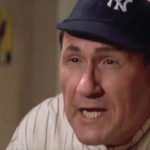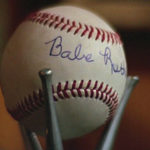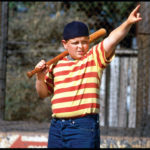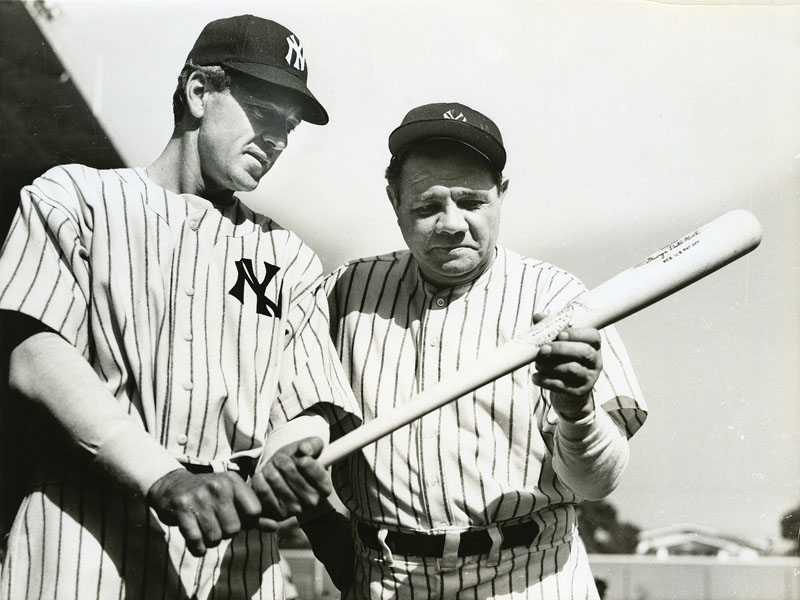
Movies have a way of elevating mere mortals to legendary status—but what happens when filmmakers try to portray someone whose persona is already larger than life even before they get on the big screen?
Babe Ruth was all that and more. While he was alive, he enjoyed nicknames that presented him as “king,” “colossus” and “sultan.” And after he died, the legends merely grew, to the point where his name today is synonymous with baseball—and cultural—immortality. But even with the difficulty of wrangling his big personality on film, many attempts have been made, to varying degrees of success.
Perhaps the most successful portrayals of Ruth came when the slugger played himself in Pride of the Yankees, a 1942 film chronicling the heroic decline and premature death of Lou Gehrig, who was played by Gary Cooper. Ruth had packed on the pounds post-retirement, as would be expected for a man with as voracious an appetite as Ruth. But in order to look as svelte as possible standing next to Cooper on film, Ruth swung for the fences and shed close to 50 pounds for the role.
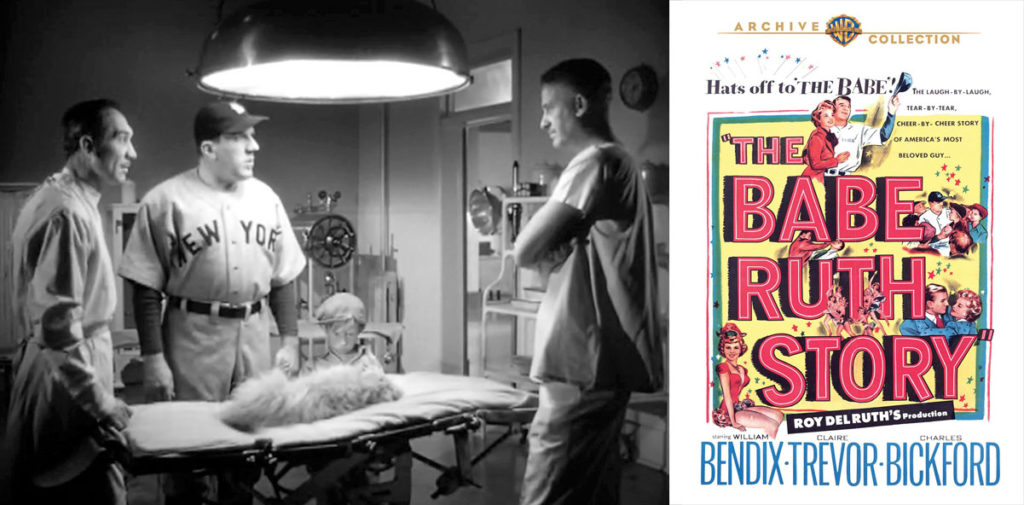
Beyond that, Ruth on film has been a less-than-stellar endeavor.
The schmaltzy and heavy-handed The Babe Ruth Story (1948) was roundly panned by critics and is widely considered to be one of the worst films of all time. William Bendix starred as Ruth, depicting the Colossus of Clout as a dimwitted oaf with the sensibility of a child. There is a curious lack of baseball action in the film, with far too much time spent on scenes like Babe taking a little boy’s dog to the vet, playing Santa Claus at a children’s hospital and promising a dying child to hit a home run in his next game—and after he does just that, the boy begins to make a miraculous recovery.
The movie was rushed through production, as news spread that the actual Babe Ruth was in grave health. The film ends with Bendix’s Ruth being taken into surgery and a narrator crediting him with America’s love of baseball. The real Ruth would die mere weeks after the film’s release.
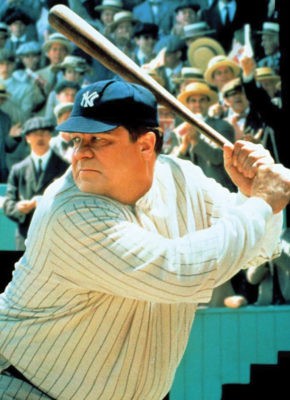
Two more attempts at telling Ruth’s story came in the 1990s. First, the television movie Babe Ruth premiered on NBC in 1991, with actor Stephen Lang in the title role. The reviews for the small-screen tale mostly applaud the film if only for it not being as bad as The Babe Ruth Story. It does delve into the darker portions of Ruth’s life, with the off-field swagger, womanizing antics and boorish boozing being touched upon. But it is hard to overlook Lang’s prosthetic nose.
The next big screen Bambino came in the form of 1992’s The Babe starring a cigar-chomping John Goodman, who was somehow too rotund to play the mountainous Ruth. The film received mixed reviews, with Goodman himself reportedly being disappointed in his own performance, but the real fault lies with the stilted writing and oblivious direction. Goodman does his best with the material, especially for the less heroic moments of Ruth’s life. For baseball fanatics, the production took far too many liberties with Ruth’s story, fabricating moments for dramatic effect and getting entire settings flat-out wrong.
Perhaps the best “Babe Ruth movie” is the one that doesn’t feature Ruth as the central figure. The Sandlot (1993) tells the story of a group of baseball-obsessed boys during the summer of 1962. The film’s main protagonist, Scotty Smalls, is the new-to-the-neighborhood loser who eventually joins the rag-tag sandlot baseball team. After Benny “the Jet” Rodriguez knocks the stuffing out of a ball, Smalls runs home to retrieve a ball from his stepfather’s private collection. The ball is signed by none other than Ruth himself—only Smalls has no idea who that is. After Smalls clocks the ball over the fence for his first home run, the boys learn it was signed by Ruth all along, sending them all into a panic as they devise plans to retrieve the ball from a backyard inhabited by “the Beast,” an English Mastiff.
Ruth (played by Art LaFleur) appears in the film as an apparition to Rodriguez, bestowing sage advice (“Remember kid, there’s heroes and there’s legends. Heroes get remembered but legends never die, follow your heart kid, and you’ll never go wrong.”), and simplifying the problem with the lost ball (“just hop over there and get it.”). But perhaps the film’s greatest tribute to Ruth is the nickname of homer-hitting catcher Hamilton Porter, “the Great Hambino.”
Since then, there have been few depictions of Ruth. Maybe it’s time for filmmakers to take another swing at getting Ruth right on film.

